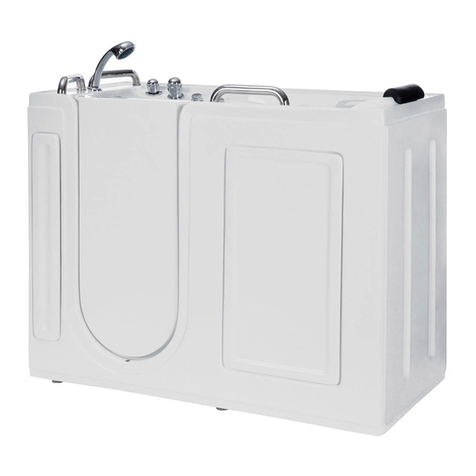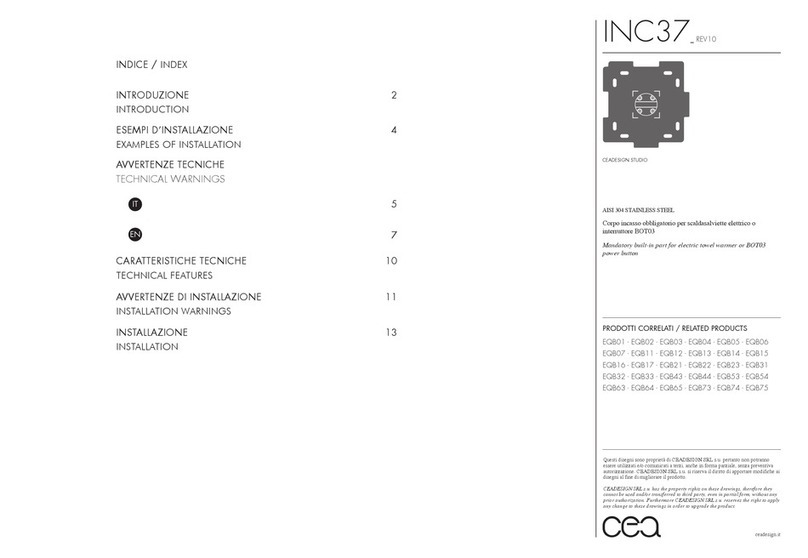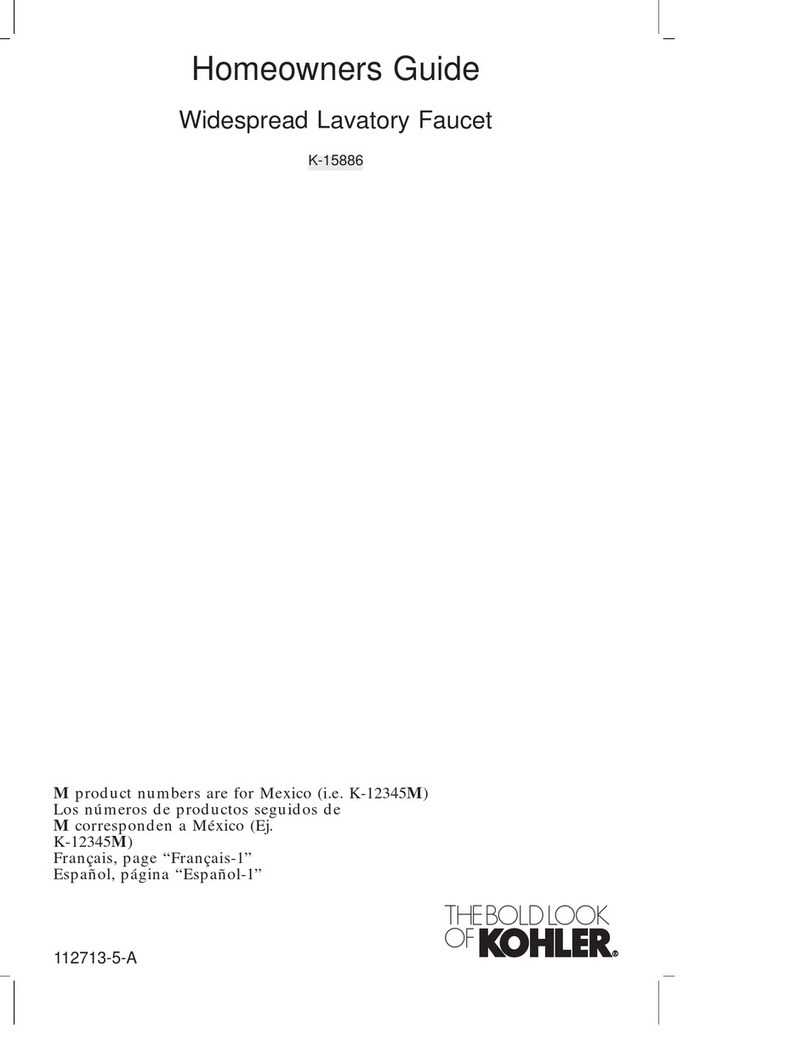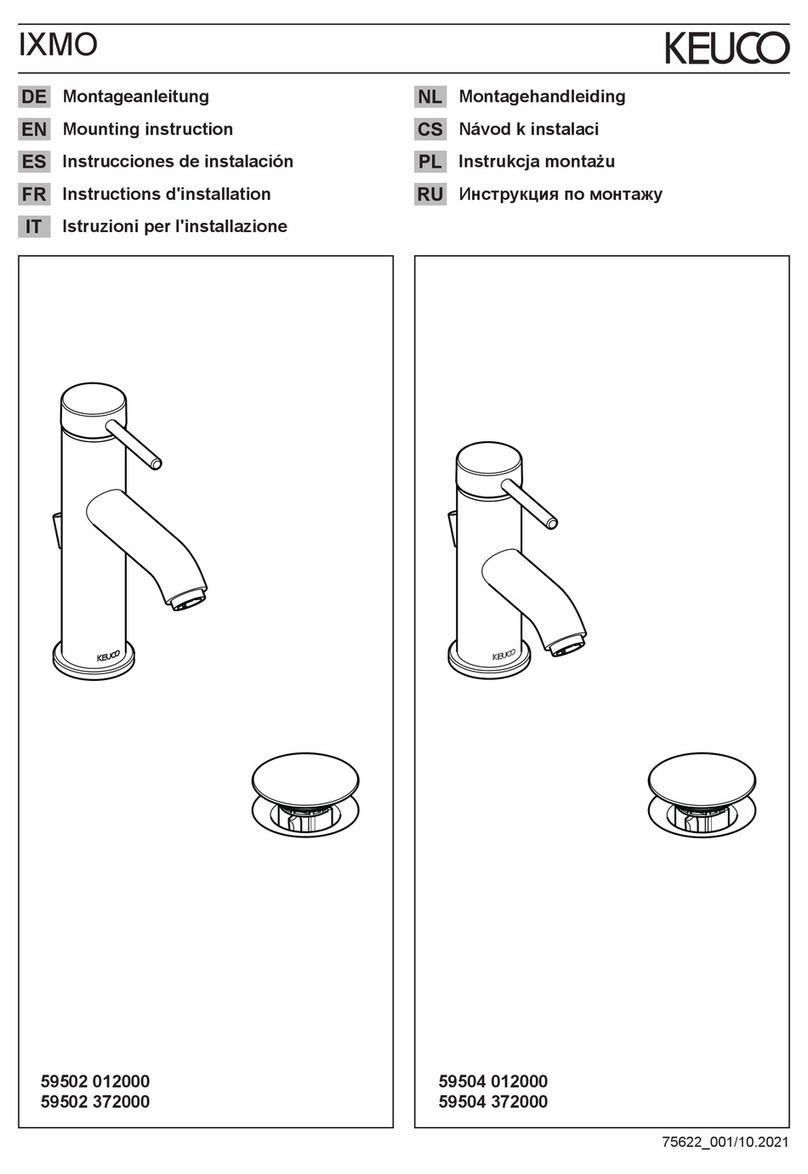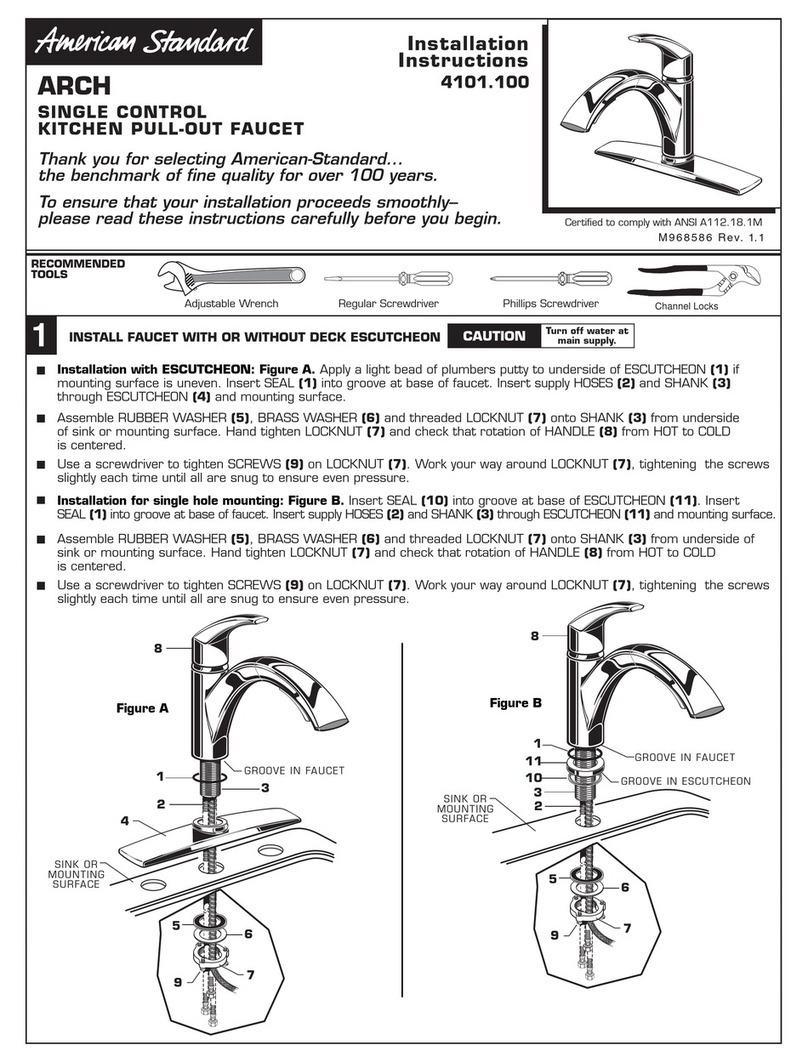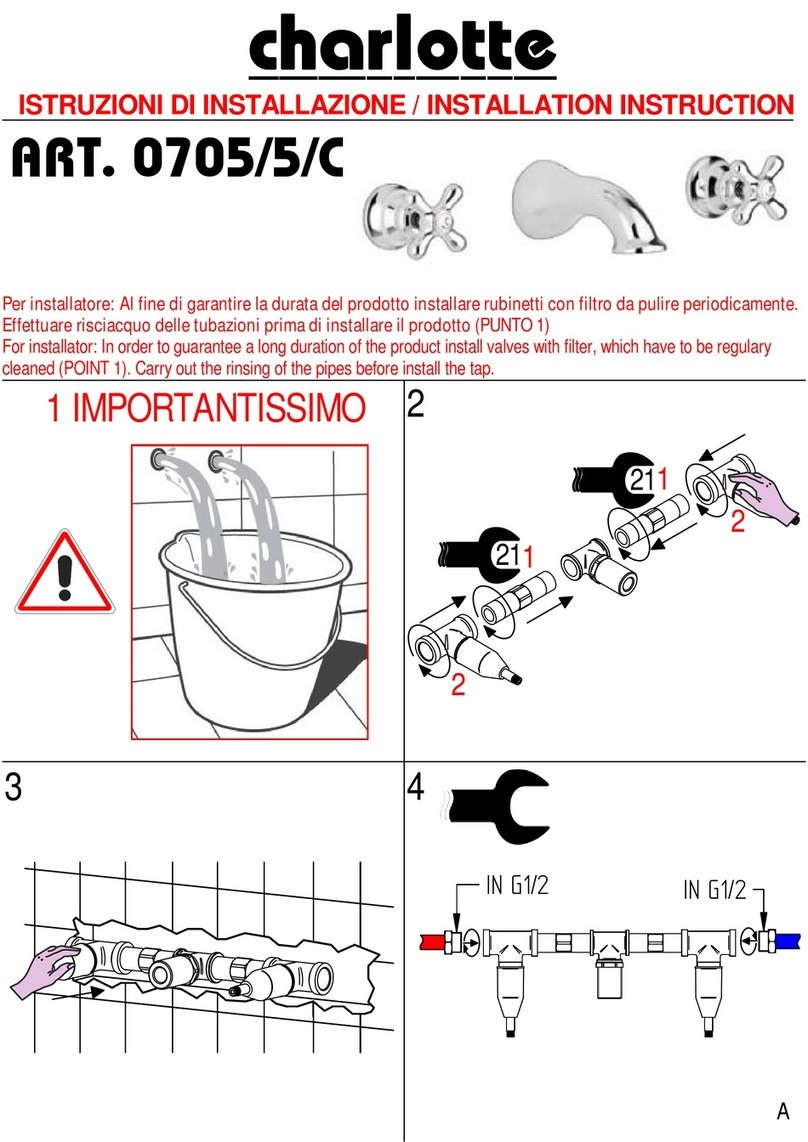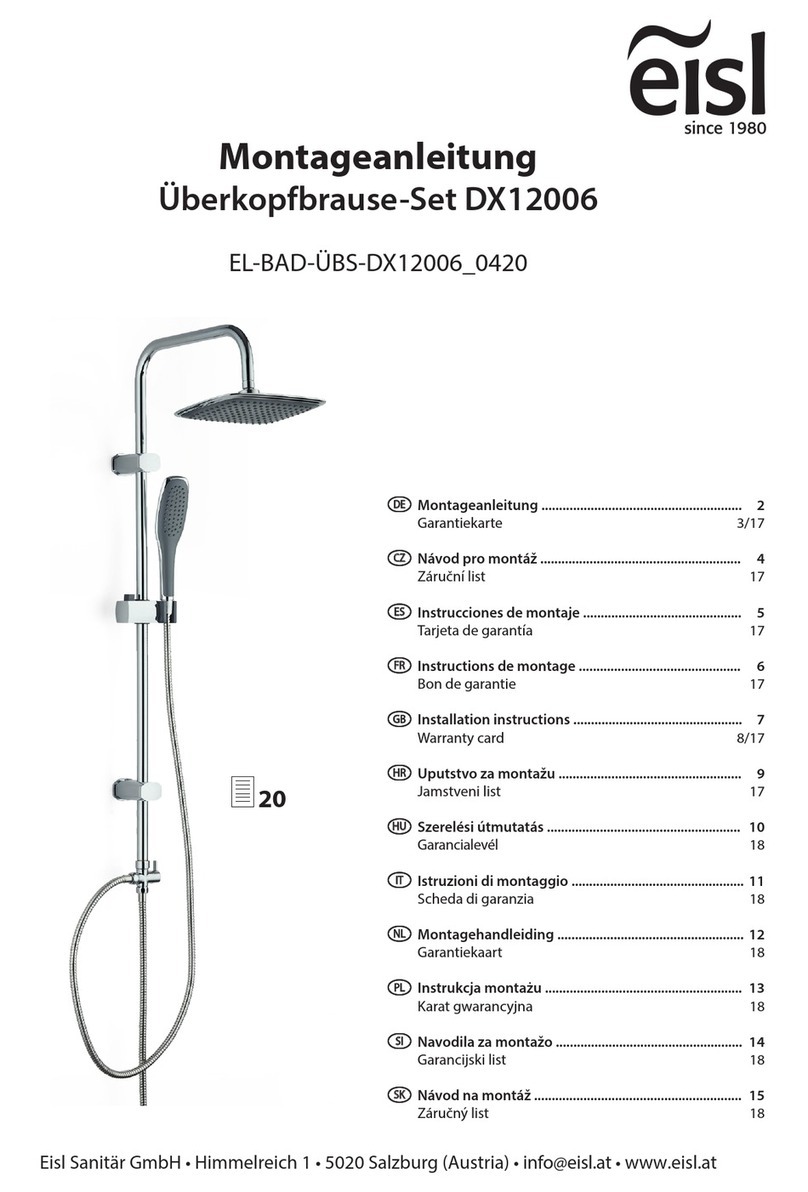Denios G 1902 User manual

Vollkörper- und Augendusche G 1902 / G 1902-P./-G 1931 / G 1991
Full body and face Shower G 1902 / G 1902-P./-G 1931 / G 1991
Douche corporelle et laveur oculaire G 1902 / G 1902-P./-G 1931 / G 1991
Ducha lavaojos y corporal G 1902 / G 1902-P./-G 1931 / G 1991
Prysznic całego ciała i oczu G 1902 / G 1902-P./-G 1931 / G 1991
DENIOS AG
Dehmer Straße 58-66
32549 Bad Oeynhausen
Tel.: +49 (0)5731 7 53 – 0
Fax: +49 (0)5731 7 53 – 197
Ihren lokalen Ansprechpartner finden Sie auf unserer Internetseite www.denios.com
You`ll find your local partner on our InterNet side www.denios.com
Vous trouverez le nom de votre interlocuteur sur notre site internet www.denios.com
En nuestra página web encontrará usted la persona de contacto correspondiente www.denios.com
Na stronie internetowej www.denios.com znajdąPaństwo lokalnego przedstawiciela naszej firmy.
Betriebsanleitung 07/2008
121785_BA_INT 002

Notdusche G1902/G1902-P, G1931/G1991 Seite 2 von 12 Seiten Ausgabe 07/2008
117467, 117426, 117412, 117468
S
Pos. Deutsch English Français Español Polski
A Bodenflansch Flor flange Bride au so Cubierta del suelo Kołnierz podłogowy
B Verschluss Stop end Mécanisme de fer-
meture
Cierre Zamknięcie
C Auslassstück Outlet tee Pièce d’évacuation Desagüe Element spustowy
D Rohr Pipe Tuyau Tubo Rura
E Rahmeneinheit für
das Wasch-becken
Mounting unit for the
wash basin
Cadre pour le lavabo Armazón para la
pileta
Jednostka ramowa
umywalki
F Rohr Pipe Tuyau Tubo Rura
G Einlass T-Stück Inlet tee Accès du té Pieza-T Element wpustowy T
H Rohr Pipe Tuyau Tubo Rura
I Vertikaler Einlass Vertical connection Arrivée du té Vertical Superior Wpust pionowy
J Rohr Pipe Tuyau Tubo Rura
K Notfallduschhahn Emergency shower
valve
Bobinet de la douche
de secours
Grifo de emergencia Kurek awaryjny
prysznica
L Rohr Pipe Tuyau Tubo Rura
M Winkelstück Elbow Coude Ángulo Element kątowy
N Duschkopf Shower head Tête de douche Cabeza de la ducha Głowica prysznicowa
O Scheibe Kasher Rondelle creuse Aarandela Szyba
P Gummidichtung Rubber seal Caoutchouc Junta de goma Uszczelka gumowa
Q Becken Basin Évier Pileta Miska
R Abflussplatte Outlet fitting Plaque d’évacuation Sumidero Płytka odpływowa
S Sprühkopfeinheit Spray head device Jednostka dysz
prysznicowych
1 Staubschutz und
Verschluss
Protective cap and
closure
Protection contre la
poussière et ferme-
ture
Protector de polvo y
cierre
Ochrona przed pyłem
i zamknięcie
2 Polyurethanfilter Polyurethane filter Filtre en polyuré-
thanne
Filtro de poliuretano Filtr poliuretanowy
3 Kunststofflörper Plastic main body Corps plastique Cuerpo de plástico Korpus z tworzywa
sztucznego
4 Durchflussregler Flow controller Régulateur de débit Regulador de flujo Regulator przepływu
Detail
S
c
d
e
f

Notdusche G1902/G1902-P, G1931/G1991 Seite 3 von 12 Seiten Ausgabe 07/2008
117467, 117426, 117412, 117468
1. Allgemeine Hinweise
Jede Person, die mit der Aufstellung, Bedienung, Wartung und Reparatur des Produktes befasst ist, muss die
Betriebsanleitung gelesen und verstanden haben. Diese Betriebsanleitung entbindet den Betreiber nicht von der
Verpflichtung, eine spezielle Betriebsanweisung zu erstellen.
Die nationalen Vorschriften und Sicherheitsbestimmungen sind zu beachten
2. Einsatz und Verwendungszweck
Die Notdusche dient zum gezielten Abspülen des Körpers und zum Ausspülen der Augen oder des Gesich-
tes. Die Augendusche dient zum gezielten Ausspülen der Augen.
3. Technische Beschreibung
Die Notdusche wird am Boden befestigt. Sie besteht aus einer Augen- und Gesichtsdusche, die je nach
Ausführung, ohne Becken oder in einem Edelstahl- oder Kunststoffbecken integriert ist und eine Körperdu-
sche, wobei der Duschkopf aus Kunststoff oder bei Typ G 1991 aus Edelstahl besteht.
Die Sprühdüsen der Augen- und Gesichtsdusche sind mit einem selbstregulierenden Durchflussregler,
einem Schmutzfilter und Schutzkappen ausgestattet.
Die Augendusche wird an einem Wasserhahn montiert. Da sich zusätzlich eine Wasserauslassöffnung
unterhalb der Augendusche befindet, dann der Wasserhahn auch weiterhin genutzt werden.
4. Aufbau
1. Montieren Sie den Bodenflansch (A). Bohren Sie dazu 3 Löcher à ∅12 mm in den Fußboden. Befestigen
Sie den Flansch mit Dübeln und 10 mm Schrauben (bei Typ G 1991 sind vier Löcher à ∅16 mm zu bohren
und mit 14 mm Dübeln und 12 mm Schrauben zu befestigen)
2. Verschluss (B) und Auslassstück ( C) montieren.
3. Rohr (D) und die Rahmeneinheit für das Waschbecken (E) befestigen. Positionieren Sie die Rahmeneinheit
(E) so, dass Sie für den Benutzer gut zugänglich ist.
4. Anschließend Rohr (F) und Einlass T-Stück (G) montieren. Das T-Stück so montieren, dass es Anschluss
an die Wasserzufuhr hat. Falls der obere vertikale Einlass (I) zum Einsatz kommt, verschließen Sie das T-
Stück (G) mit dem Vierkantverschluss.
5. Montieren Sie das Rohr (H) und befestigen Sie das Einlass T-Stück (I) reduzierend und nach vorne, damit
die Dusche an der richtigen Stelle angebracht wird. Bei Einsatz des hinteren horizontalen Einlasses (G),
verschließen Sie das T-Stück (I) mit dem Vierkantverschluss.
6. Anschließend befestigen Sie das Rohr (J) und den Notfallduschhahn (K). Montieren Sie daran das Rohr (L)
und das Winkelstück (M) und den Duschkopf (N).
7. Platzieren Sie die becherförmige Scheibe (O), die Gummidichtung (P) und das Becken (Q) auf dem Ge-
winde. Zentrieren Sie die Teile um einen wasserdichten Verschluss zu sichern.
8. Schrauben Sie die Abflussplatte ( R) so weit wie möglich auf den Montageschaft herunter. Drehen Sie not-
falls das Becken im Uhrzeigersinn, um die Abflussplatte ( R) auf den Montageschaft zu ziehen.
9. Schrauben Sie den Sprühkopf auf den Montageschaft herunter. Positionieren Sie die Sprühköpfe so, dass
sie gut zugänglich sind.
10. Sichern Sie die gesamte Anlage am Boden und / oder an der Wand, um ihr Stabilität zu geben.
11. Überprüfen Sie die Funktion der Anlage.
Achtung:
Es handelt sich ausschließlich um verjüngte Rohre, so dass Sie Rohrverbundstöße oder Teflonband benötigen,
um einen wasserdichten Anschluss zu garantieren!
Deutsch

Notdusche G1902/G1902-P, G1931/G1991 Seite 4 von 12 Seiten Ausgabe 07/2008
117467, 117426, 117412, 117468
5. Betrieb
Anschließen
•Anschließen der Wassereinlassöffnung an einen 1 ¼“ NPT Wasseranschluss. Die Wasserzufuhr kann
wahlweise von oben oder auf dreiviertel Höhe der Notdusche erfolgen. Ggf. ist der Stopfen dazu umzu-
schrauben.
Betrieb Augendusche
•Zum Betrieb der Augendusche die Kunststoffklappen der Sprühköpfe aufklappen
•Die Betätigung erfolgt über die Druckplatte. Die Druckplatte dazu nach hinten drücken. Die Druck bleibt in
dieser Stellung
Betrieb Körperdusche
•Zur Betätigung der Körperdusche ist der Handgriff neben dem Duschkopf herunterzuziehen. Der Handgriff
bleibt in dieser Stellung.
•Um das Wasser der Körperdusche wieder abzustellen, muss der Handgriff wieder nach oben geschoben
werden.
Gefährdungsquellen
•Die Sprühköpfe sind bei Nichtgebrauch mit den Kunststoffklappen abzudecken, um ein Verschmutzen der
Sprühköpfe zu verhindern.
6. Die wichtigsten Regeln
Hier finden Sie die wichtigsten Regeln:
BGR 120 (Richtlinien für Laboratorien), EN 15154-2 (Notduschen-Einrichtungen)
Notduschen erfüllen einen wichtigen Zweck im Bereich der ersten Hilfe:
Verbrennungen, Verbrühungen oder Verätzungen gehören zu den Verletzungen, bei denen die sofortige erste
Hilfe zur Eindämmung der Schäden entscheidend ist. Je schneller eine dieser Verletzungen mit viel kaltem
Wasser behandelt wird, desto eher wird eine Schädigung des tiefer gelegenen Gewebes verhindert.
7. Wartung und Instandhaltung
•Die Notdusche sollte monatlich aktiviert werden, um die Leitung zu spülen und sich von einer einwand-
freien Funktion zu überzeugen!
•Zudem wird verhindert, dass sich das in der Dusche noch vorhandene Wasser verkeimt oder verfärbt.
•Es ist darauf zu achten, dass der Duschkopf nicht verschmutzt.

Notdusche G1902/G1902-P, G1931/G1991 Seite 5 von 12 Seiten Ausgabe 07/2008
117467, 117426, 117412, 117468
1. General instructions
Anyone involved with the assembly, operation, maintenance or repair of the product should read and be aware
of the contents of the instruction manual.
National standards and safety regulations must be observed.
2. Use and intended purpose
The full body shower is used for washing specifically the body.
The full body shower provides swift assistance when initial steps are being taken to combat possible contamina-
tion of the body with substances which present a health hazard.
3. Technical details
The emergency shower fixes to the floor, it consists of an eye and face shower, which is available without a
basin or with either a stainless steel or a plastic basin and a full body shower with either a plastic (model G
1991) or a stainless steel shower head.
The shower heads for the eye and face shower have a self-regulating water flow, a filter and protective
caps.
The eye shower fixes onto a tap, there is a switch on the bottom of the tap to ensure that the tap can be used
independently of the shower.
4. Assembly
1. Fit the floor flange (A) in position. For this purpose, drill 3 x 12 mm dia. holes in the floor. Fasten the flange
down with wall plugs and 10 mm screws (with the G 1991 type, drill 4 x 16 mm dia. holes and fasten the
flange down with 14 mm wall plugs and 12 mm screws).
2. Fit the stop end (B) and the outlet tee (C).
3. Screw on the pipe (D) and the mounting unit (E) for the wash basin. Position the mounting unit so that us-
ers will have good access to the basin.
4. Then screw on the pipe (F) and the inlet tee (G). Screw on the tee in such a way that it can be connected to
the water supply. If on the other hand the vertical connection at the top (I) is going to be used, seal off the
tee (G) with the square-drive plug.
5. Screw on the pipe (H) and then screw on the inlet tee (I) with its reduced branch pointing forward, so that
the shower can be mounted at the correct point. If the horizontal inlet at the rear (G) is going to be used,
seal off the tee (I) with the square-drive plug.
6. Then screw on the pipe (J) and emergency shower valve (K). Screw to the latter the pipe (L), the elbow (M)
and the shower head (N).
7. Place the dished washer (O), the rubber seal (P) and the basin (Q) on the thread. Centre the parts to en-
sure that there is a water-tight seal.
8. Screw the outlet fitting (R) as far as possible down the threaded stem. If necessary, turn the basin clock-
wise to screw the outlet fitting (R) down the threaded stem.
9. Screw the spray head down onto the threaded stem. Position the spray heads so that they are easily ac-
cessible.
10. Secure the entire unit to the floor and/or wall to give it stability.
11. Check the operation of the unit.
Important:
The pipes are all taper-threaded, so you will need tightly mated connections or Teflon thread sealing tape to
ensure that the connections are water-tight!
En
g
lish

Notdusche G1902/G1902-P, G1931/G1991 Seite 6 von 12 Seiten Ausgabe 07/2008
117467, 117426, 117412, 117468
5. Operation
Connection
•Connect the water supply opening to a 1 ¼“ NPT water connection. The water can be supplied optionally
from above or at three quarters of the height of the emergency shower. If necessary rescrew the plug.
Operation of eye shower
•To operate the eye shower fold up the plastic caps of the shower heads.
•The eye shower is operated via the pressure plate. To do this push the pressure plate backwards. The
pressure plate remains in this position
Operation of full body shower
•To operate the full body shower pull the handle next to the shower head downwards. The handle remains
in this position.
•To turn off the water of the full body shower again, the handle must be pushed upwards again.
Hazard sources
The spray heads must be covered with the protective caps when not in use to prevent fouling of the spray
heads.
6. Important rules
Here you will find the importantly rules:
EN 15154-2, ANSI - Z 358-1.1990.
Full body and eye showers serve a main purpose in the range of first aid.
Burns, scalds or chemical burn are injuries, whereupon immediate action is neccecary to minimise damage. To
reduce impairment, this injuries should be treated with cold water as soon as possible.
7. Maintenance and servicing
•The emergency shower should be operated monthly to rinse the piping and to ensure it is functioning
properly.
•In addition water still present in the shower should be prevented from being contaminated with germs
or discoloured.
•Make sure that the spray head is not fouled.

Notdusche G1902/G1902-P, G1931/G1991 Seite 7 von 12 Seiten Ausgabe 07/2008
117467, 117426, 117412, 117468
1. Informations générales
Toute personne chargée d’installer, d’utiliser, d’effectuer les travaux de maintenance et de réparation sur le
produit, doit avoir lu et compris l’intégralité du manuel d’utilisation. Ce manuel n’empêche en aucun cas
l’utilisateur de l'obligation de fournir un mode d'emploi spécial.
On doit observer des normes et les règlements nationaux de sûreté
2. Usage et emploi
Le laveur corporel sert au rinçage ciblé du corps.
Le laveur oculaire procure les premiers soins lors des contaminations possibles du corps avec des substances
dangereuses.
3. Description technique
La douche d'urgence est fixée au sol. Elle est composé d’un laveur oculaire et facial, selon le modèle, sans
évier ou avec évier en plastique ou en inox ainsi que d’une douche corporelle. La pomme de douche est
conçue en matière plastique ou en inox pour le modèle G 1991.
Les buses du laveur oculaire et facial sont équipées avec un régulateur d'écoulement automatique, d’un
filtre et de capuchons.
Le laveur oculaire est installé sur un robinet. Puisqu'une sortie d'eau supplémentaire se situe sous le laveur
oculaire, il est possible de continuer à utiliser le robinet.
4. Montage
1. Monter la bride au sol (A). Percer 3 trous de ∅12 mm dans le plancher. Fixer la bride avec des chevilles et
vis de 10 mm (percer 4 trous de ∅16 mm pour le modèle G 1991 et fixer avec des chevilles de 14 mm et
des vis de 12 mm)
2. Monter le mécanisme de fermeture (B) et la pièce d’évacuation (C).
3. Fixer le tuyau (D) et le cadre pour le lavabo (E). Positionner le cadre (E) de telle manière qu’il soit correc-
tement accessible pour l’utilisateur.
4. Monter finalement le tuyau (F) et l’accès du té (G). Monter le té de telle manière qu’il ait une connexion à
l’amenée d’eau. Si l’arrivée verticale supérieure (I) est utilisée, verrouiller le té avec la fermeture carrée (G).
5. Monter le tuyau (H) et fixer l’arrivée du té (I) réducteur et vers l’avant, afin que la douche soit placée à la
bonne place. Lors de l’utilisation de l’arrivée horizontale arrière (G), verrouiller le té (I) avec la fermeture
carrée.
6. Fixer finalement le tuyau (J) et le robinet de la douche de secours (K). Monter le tuyau (L) au coude (M) et
la tête de douche (N).
7. Placer la rondelle creuse (O), le joint en caoutchouc (P) et l’évier (Q) sur le filet. Centrer les pièces pour
assurer une fermeture étanche.
8. Visser la plaque d’évacuation (R) aussi loin que possible sur la tige de montage. Tourner en cas de besoin
l’évier dans le sens horaire pour remonter la plaque d’évacuation (R) sur la tige de montage.
9. Baisser la tête de pulvérisation sur la tige de montage. Positionner les têtes de pulvérisation de telle ma-
nière qu’elles soient correctement accessibles.
10. Protéger l’installation générale au mur / au sol afin de la stabiliser.
11. Vérifier le fonctionnement de l’installation.
Attention:
Il s’agit exclusivement de tuyaux coniques; utiliser des jointures de tuyau ou des bandes téflon pour assurer
l’étanchéité du raccord!
5. Fonctionnement
Raccordement
•Raccorder l’orifice d’admission d’eau à un raccord en eau 1 ¼“ NPT. L’arrivée d’eau peut se faire soit du
haut soit aux trois quarts de la hauteur de la douche de secours. Visser le cas échéant le bouchon.
Fonctionnement du laveur oculaire
•Relever les bouchons en plastique des têtes de pulvérisation pour faire fonctionner le laveur oculaire.
Français

Notdusche G1902/G1902-P, G1931/G1991 Seite 8 von 12 Seiten Ausgabe 07/2008
117467, 117426, 117412, 117468
•La commande se fait au niveau de la plaque de pression. Appuyer la plaque de pression vers l’arrière. La
plaque reste dans cette position.
Fonctionnement de la douche corporelle
•Baisser le levier pour la commande de la douche corporelle. Le levier reste dans cette position.
•Pour fermer l’eau de la douche corporelle, repousser le levier vers le haut.
Sources de risque
Remettre les bouchons en plastique sur les têtes de pulvérisation en cas de non utilisation pour éviter de salir
les têtes de pulvérisation.
6. Règles les plus importantes
Vous trouverez ici les règles les plus importantes:
EN 15154-2 (dispositifs de douches de secours)
Les douches de secours remplissent un rôle important dans le domaine des premiers secours:
Les brûlures, ébouillantages ou brûlures par acide font partie des blessures pour lesquelles une aide de premier
secours immédiate est décisive. Plus le traitement à l’eau froide de la blessure est rapide, plus les lésions des
tissus profonds seront évitées.
7. Maintenance et entretien
•Activer mensuellement la douche de secours pour nettoyer les conduits et s’assurer du bon fcontion-
nement!
•Cela empêche de plus que le laveur se décolore ou moisisse avec l’eau stagnante.
•Bien prendre garde à ce que le pommeau de douche ne se salisse pas

Notdusche G1902/G1902-P, G1931/G1991 Seite 9 von 12 Seiten Ausgabe 07/2008
117467, 117426, 117412, 117468
1. Aviso general
Toda persona que intervenga en la instalación, manejo, cuidado y reparación del producto ha de conocer cui-
dadosamente las instrucciones de uso. Estas instrucciones de uso no eximen al usuario de la obligación de
elaborar unas instrucciones de servicio especiales.
Los estándares y las regulaciones nacionales de seguridad deben ser observados.
2. Empleo y finalidad
La ducha corporal sirve para el lavado adecuado del cuerpo.
La ducha corporal ayuda en una primera limpieza de posibles contaminaciones del cuerpo con sustancias
perjudiciales para la salud.
3. Descripción técnica
La ducha de emergencia se fija sobre el suelo. Está formada por una ducha lavaojos y facial, que según
modelos está integrada en una pileta de acero inoxidable o de plástico o bien carece de ella, y de una
ducha corporal, cuya cabeza es de plástico o, en el Tipo G 1991, de acero inoxidable.
Las cabezas aspersoras de las duchas lavaojos y facial contienen un regulador de paso automático, un
filtro contra la suciedad y una tapa protectora.
La ducha lavaojos se monta sobre un grifo de agua, que puede seguir siendo utilizado dado que en la parte
inferior de la ducha hay otra salida de agua.
4. Montaje
1. Monte la cubierta del suelo (A). Taladre para ello 3 agujeros de ∅12 mm en el suelo. Fije la cubierta con
tacos y tornillos de 10 mm (en el Tipo G 1994, 4 agujeros de ∅16 mm, y fijar con tacos de 14 mm y
tornillos de 12 mm).
2. Montar el cierre (B) y el desagüe ( C).
3. Fijar el tubo (D) y el armazón para la pileta (E). Coloque el armazón (E) a una altura adecuada para el
usuario.
4. Monte a continuación el tubo (F) y la pieza-T (G). Montar la pieza-T de tal forma que la conexión con la
entrada del agua sea posible. En caso de que la entrada que se utilice sea la vertical superior (I), cierre la
pieza-T (G) con el cierre cuadrado.
5. Monte el tubo (H) y fije la entrada de la pieza-T (I) reduciéndola y hacia delante, para que la ducha esté
colocada en su posición correcta. Si se utiliza la entrada horizontal (G), cierre la pieza-T (I) con el cierre
cuadrado.
6. A continuación, fije el tubo (J) y el grifo de emergencia (K). Monte el tubo (L) y el ángulo (M) y la cabeza de
la ducha (N).
7. Coloque la arandela con forma de taza (O), la junta de goma (P) y la pileta (Q) en la rosca. Centre bien
todas las partes para asegurar un cierre resistente al agua.
8. Atornille el sumidero ( R) tan abajo como sea posible. Si es necesario, gire la pileta en sentido de las
agujas del reloj para ajustar bien el sumidero (R) al montaje.
9. Atornille la cabeza aspersora sobre todo el montaje. Colóquelas de tal modo que sean fácilmente
accesibles.
10. Asegure la instalación entera al suelo y/o a la pared, para darle más estabilidad.
11. Compruebe que todo funciona correctamente.
Atención:
Se trata exclusivamente de tubos cónicos, es decir, que necesitan bandas de teflón o juntas de tuberías para
garantizar una conexión estanca
5. Funcionamiento
Conectar
•Enganche el orificio de entrada del agua a una llave de agua de 1 ¼“ NPT . La salida del agua puede
realizarse bien por arriba o a una altura de tres cuartos por la ducha de emergencia. En ese caso se deben
desatornillar los tapones.
Español

Notdusche G1902/G1902-P, G1931/G1991 Seite 10 von 12 Seiten Ausgabe 07/2008
117467, 117426, 117412, 117468
Funcionamiento ducha ocular
•Retire las caperuzas de plástico de las cabezas aspersoras para poder usar la ducha ocular
•Se acciona a través del pulsador, presionándolo hacia atrás. El pulsador permanece en esa posición
Funcionamiento ducha corporal
•Tire del asidero hacia abajo para accionar la ducha corporal. El asidero permanece en esa posición.
•Para parar la ducha corporal, vuelva a poner el asidero hacia arriba.
Fuentes de peligro
Cierre bien las caperuzas protectoras sobre las cabezas aspersoras cuando no use la ducha para evitar que
entre suciedad en los pulverizadores.
6. Las reglas más importantes
Aquí encontrará las reglas más importantes:
EN 15154-2 (Ducha de emergencia)
Las duchas de emergencia realizan un servicio muy importante en el ámbito de los primeros auxilios:
Escaldarse, quemarse o sufrir corrosiones son algunos de los daños en los que la aplicación de los primeros
auxilios es decisiva. Cuanto más rápido se trate alguna de estas heridas con agua fría en abundancia, más se
evitará que se dañen los tejidos corporales inferiores.
7. Mantenimiento y conservación
•Activar la ducha de emergencia una vez al mes, para enjuagar los canales y para garantizar un uso
sin problemas
•Así se evita que el agua que queda en la ducha se ensucie o se estanque.
•Vigile que la cabeza de la ducha no se ensucie.

Notdusche G1902/G1902-P, G1931/G1991 Seite 11 von 12 Seiten Ausgabe 07/2008
117467, 117426, 117412, 117468
1. Wskazówki ogólne
Każda osoba zajmująca sięmontażem, obsługą, konserwacjąi naprawąproduktu musi przeczytaćze
zrozumieniem instrukcjęobsługi. Niniejsza instrukcja obsługi nie zwalnia użytkownika z obowiązku
sporządzenia specjalnej instrukcji eksploatacji.
Należy przestrzegaćlokalnych przepisów oraz instrukcji BHP.
2. Zastosowanie i przeznaczenie
Prysznic ratunkowy służy do celowego spłukiwania ciała oraz do spłukiwania oczu lub twarzy. Prysznic do
oczu służy do celowego przepłukiwania oczu.
3. Opis techniczny
Prysznic ratunkowy jest mocowany do podłoża. Prysznic składa sięz prysznica do oczu i twarzy, w
zależności od wersji, bez miski lub zintegrowany z miskąze stali szlachetnej lub z tworzywa sztucznego
oraz prysznica do ciała, przy czym głowica prysznicowa jest z tworzywa sztucznego lub w typie G 1991 ze
stali szlachetnej.
Dysze prysznicowe prysznica do oczu i twarzy sąwyposażone w samoregulujący regulator przepływu, filtr
zanieczyszczeńi kapturki ochronne.
Prysznic do oczu jest montowany na kranie. Ponieważdodatkowo, poniżej prysznica oczu znajduje się
otwór spustowy wody, można nadal używaćkranu.
4. Montaż
12. Zamontowaćkołnierz podłogowy (A). Wywiercićw podłodze 3 otwory ∅12 mm. Zamocowaćkołnierz
kołkami i śrubami o dł. 10 mm (w typie G 1991 należy wywiercićcztery otwory ∅16 i zamocowaćkołkami
14 mm i śrubami 12 mm).
13. Zamontowaćzamknięcie (B) i element spustowy (C).
14. Zamocowaćrurę(D) i jednostkęramowąmiski (E). Umieścićjednostkęramową(E) w taki sposób, aby była
dostępna dla użytkownika.
15. Następnie zamontowaćrurę(G) i element wpustowy T (G). Zamontowaćelement T w taki sposób, aby był
połączony z dopływem wody. W przypadku użycia górnego, pionowego wpustu (I) zamknąć element T (G)
za pomocązaworu czworokątnego.
16. Zamontowaćrurę(H) i zamocowaćelement T (I) redukująco i do przodu w celu umieszczenia prysznica w
prawidłowej pozycji. W przypadku użycia tylnego, poziomego wpustu (G) zamknąć element T (I) za
pomocązaworu czworokątnego.
17. Następnie zamocowaćrurę(J) i kurek awaryjny prysznica (K). Zamontowaćna nim rurę(L) i element
kątowy (M) oraz głowicęprysznicową(N).
18. Założyćtarczęw formie kielicha (O), uszczelkęgumową(P) i miskę(Q) na gwincie. Wypośrodkować
części w celu zabezpieczenia szczelnego zaworu.
19. Przykręcićpłytkęodpływową(R) możliwie nisko na trzpieniu montażowym. W razie potrzeby przekręcić
miskęw kierunku zgodnym z ruchem wskazówek zegara, w celu przykręcenia płytki odpływowej (R) do
trzpienia montażowego.
20. Przykręcićgłowicęprysznicowądo trzpienia montażowego. Ustawićgłowice prysznicowe w taki sposób,
aby były dostępne dla użytkownika.
21. Zabezpieczyćcałe urządzenie na podłożu i / lub na ścianie w celu zapewnienia stabilności.
22. Sprawdzićdziałanie instalacji.
Uwaga:
Chodzi wyłącznie o przewężone rury wymagające rurowych styków łączących lub taśmy teflonowej w celu
zapewnienia szczelnego połączenia.
Polski

Notdusche G1902/G1902-P, G1931/G1991 Seite 12 von 12 Seiten Ausgabe 07/2008
117467, 117426, 117412, 117468
5. Eksploatacja
Podłączenie
•Podłączyćotwór wpustowy do przyłącza wody o średnicy 1 ¼“ NPT. Doprowadzenie wody może się
odbywaćdowolnie od góry lub na ¾ wysokości prysznica. W razie potrzeby należy wkręcićkorek.
Eksploatacja prysznica do oczu
•W celu eksploatacji prysznica do oczu otworzyćklapęz tworzywa sztucznego głowic prysznicowych.
•Uruchomienie prysznica do oczu odbywa sięza pomocąpłytki przyciskowej. Nacisnąć płytkęprzyciskową.
Płytka pozostanie w tej pozycji
Eksploatacja prysznica do ciała
•W celu uruchomienia prysznica do ciała należy pociągnąć na dółuchwyt obok głowicy prysznicowej. Uchwyt
pozostanie w tej pozycji.
•W celu ponownego wyłączenia prysznica należy ponownie przesunąć uchwyt do góry.
Źródła zagrożenia
•W przypadku przerwy w eksploatacji urządzenia należy osłonićgłowice prysznicowe za pomocąklapek z
tworzywa sztucznego w celu uniknięcia zanieczyszczenia głowic.
6. Najważniejsze zasady
Poniżej zamieszczono najważniejsze zasady:
EN 15154-2 (Prysznice ratunkowe)
Prysznice ratunkowe odgrywająistotnąrolęw zakresie pierwszej pomocy.
Oparzenia, oparzenia płynami lub środkami żrącymi należą do zranień, w przypadku których natychmiastowa
pierwsza pomoc jest decydująca dla zahamowania szkód. Im szybciej zranienia te zostanąspłukane dużą
ilościązimnej wody, tym łatwiej zapobiec uszkodzeniu głębiej umiejscowionych tkanek.
7. Konserwacja i utrzymanie w dobrym stanie
•Prysznic ratunkowy należy uruchamiaćco miesiąc w celu przepłukania przewodów i sprawdzenia
nienagannego funkcjonowania urządzenia!
•Dodatkowo zapobiega to skażeniu bakteriami lub odbarwieniu pozostającej w prysznicu wody.
•Należy zwracaćuwagę, aby nie zabrudzićgłowicy prysznicowej.
This manual suits for next models
3
Table of contents
Languages:
Popular Plumbing Product manuals by other brands
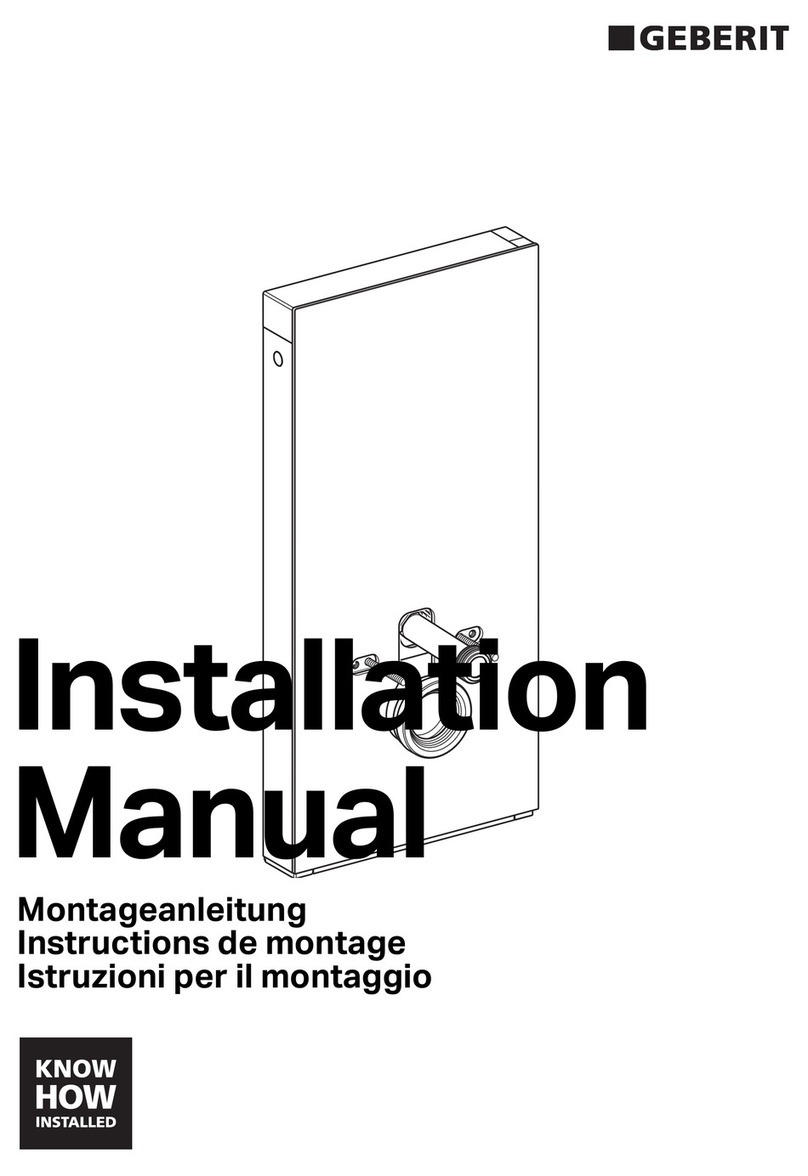
Geberit
Geberit 131.028 1 installation manual
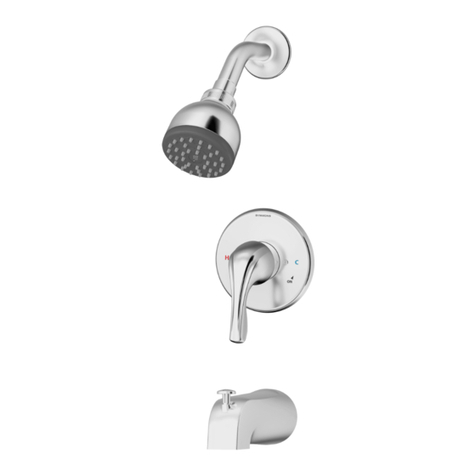
Symmons
Symmons Origins 9600-PLR Operation & maintenance manual

Sentiotec
Sentiotec COUNTRY Assembly instructions
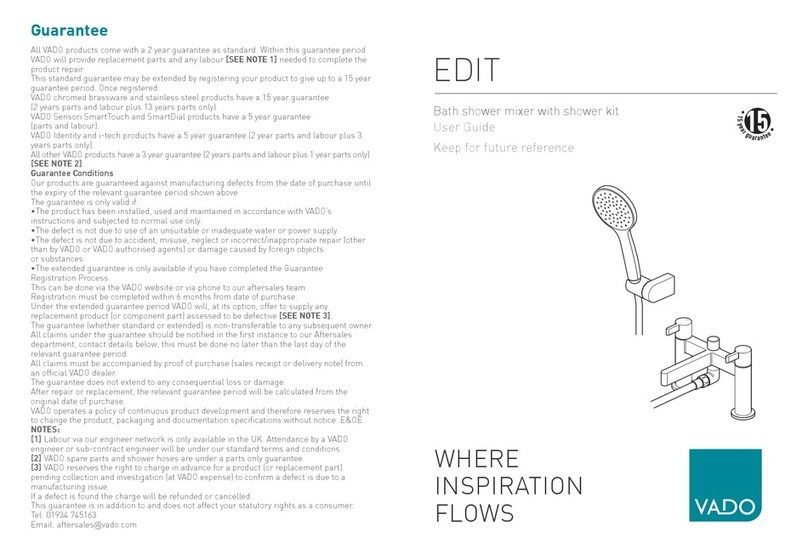
VADO
VADO EDIT user guide
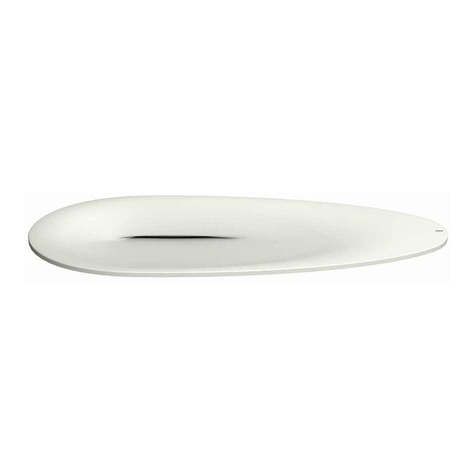
Clou
Clou First CL/02.27011 installation instructions
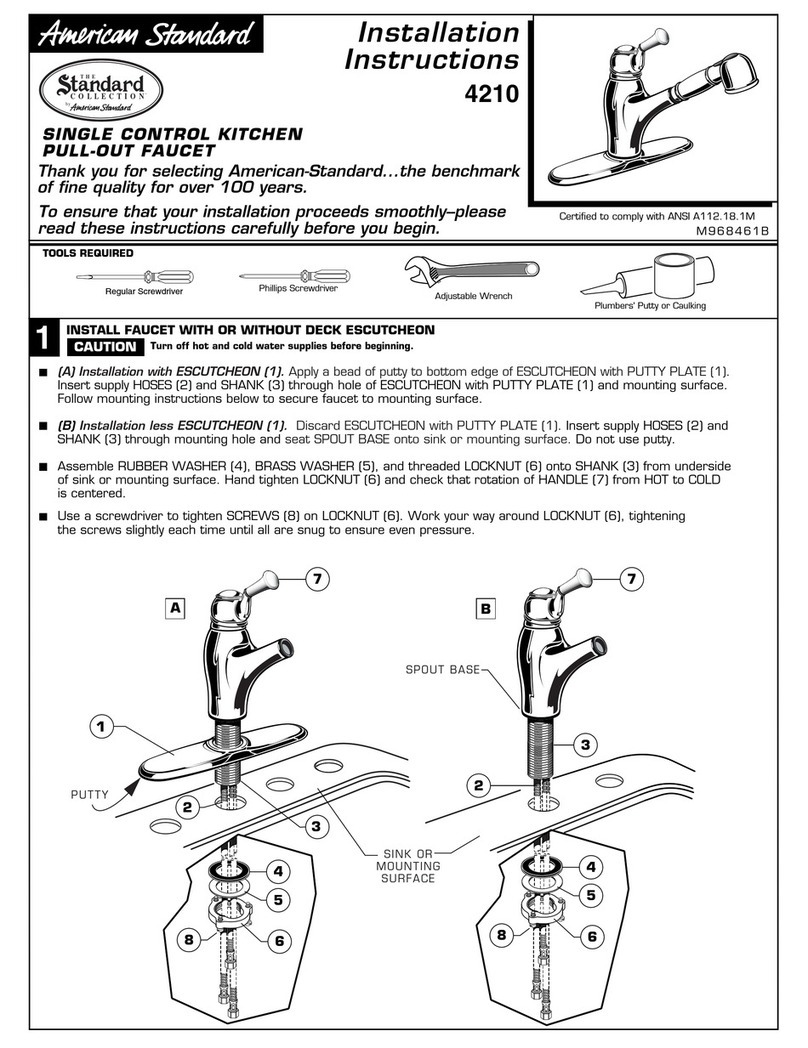
American Standard
American Standard Standard 4210 installation instructions
